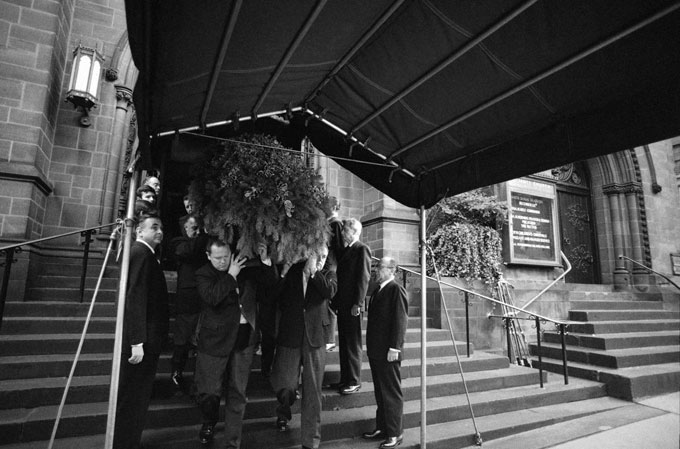This AP image from John Steinbeck’s December 23, 1968 funeral, at St. James Episcopal Church in New York, appears in a recent Ravalli Republic photo essay that attempts the question, “What was it about 1968 that shook the foundations of American life, defining the end of one generation and the beginning of another?” Given the competition and the source—a county paper in Hamilton, Montana—it’s remarkable that Steinbeck’s death made the cut for a year characterized by assassination, war, and the election of a president who later resigned in disgrace. Located on the Wyoming border, Hamilton, Montana wasn’t named for the Irish grandfather immortalized in East of Eden. But, like Salinas, it’s the county seat, and it’s about the size Salinas was when Sam Hamilton died and Steinbeck was born. Steinbeck celebrated the beauty of Montana in Travels with Charley, and the life of towns like Hamilton in America and Americans. If his death still sticks in the minds of Ravalli Republic readers in this momentous year, gratitude rather than surprise would be the right response.



“Once I said to her [Elaine] I don’t want the barbarity of funeral for myself. And she said, don’t be silly. A funeral isn’t for the dead. You’ll simple be a stage set for a kind of festival maybe. And besides, you won’t even be there.”
– Steinbeck: A Life in Letters.Carlton A. Sheffield. 8/5/65, Sag Harbor. 829.
Herb Behrens served in retirement as archivist for the substantial Steinbeck collection housed at the National Steinbeck Center in Salinas. His comment is timely in the context of the splendidly staged Episcopal funeral service held this morning at the National Cathedral in Washington, D.C. for President George H.W. Bush.